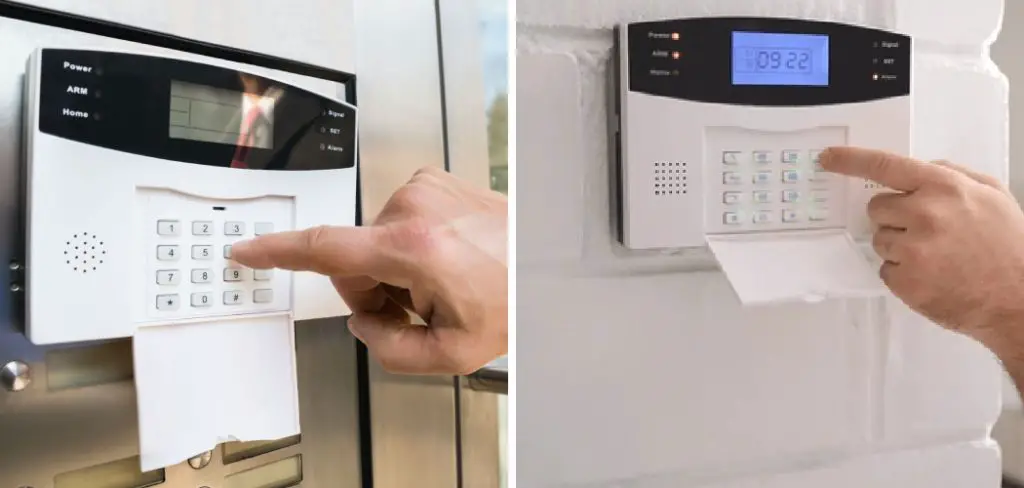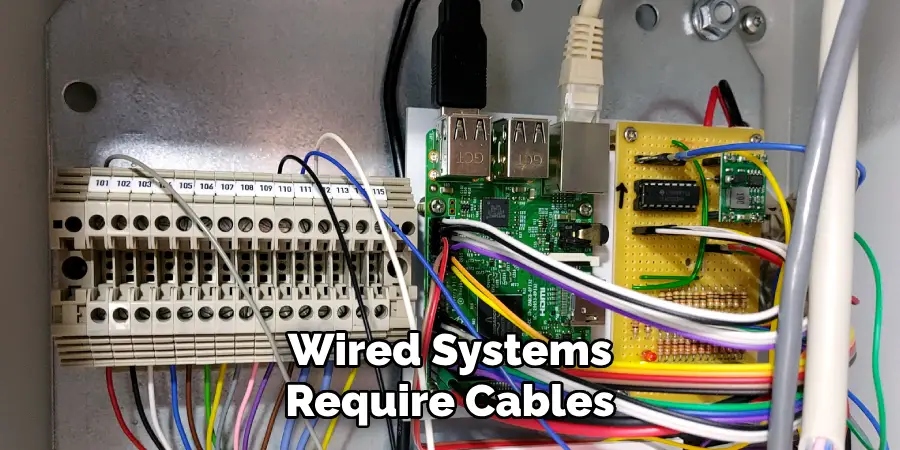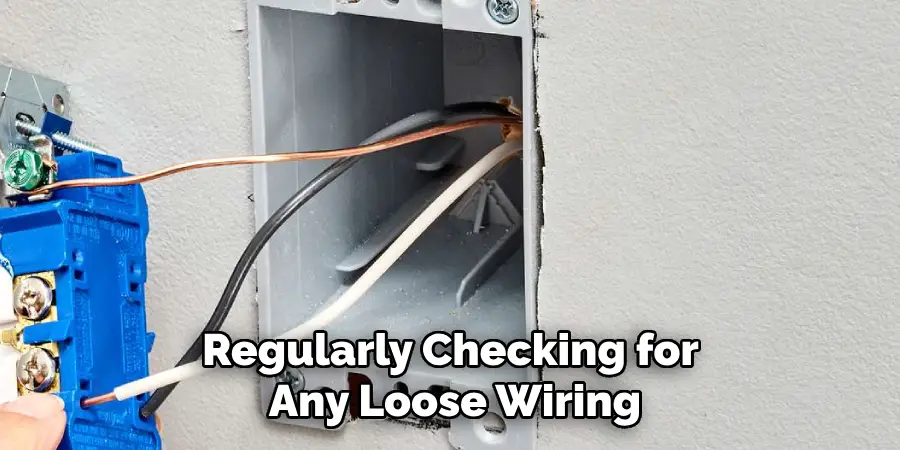Have you ever stayed up late at night worrying about the security of your home and if someone could break in without you knowing? You’re not alone – many people feel anxious about the possibility of an intruder entering their house when they are asleep or away. As technology has advanced, home security systems have become more affordable and accessible for the average person.

In this post, I’ll walk through the simple process of how to set a security alarm system for your home to help ease worries and provide some peace of mind. We’ll cover choosing the right type of system, picking out necessary equipment, installing components yourself or hiring a professional, customizing settings, and activating the monitoring services so you can rest easier at night knowing your home and family are protected.
Step-by-step Guidelines on How to Set a Security Alarm
Step 1: Choosing the Right Type of Security System
The first step to setting up a security alarm is selecting the type of system you want. There are two main types: wired and wireless. Wired systems require cables to be run through walls and can be more complicated to install, while wireless systems use radio signals and are easier to set up. If you’re not comfortable installing a wired system yourself, it’s best to hire a professional.

Step 2: Picking Out Necessary Equipment
Once you’ve decided on the type of system, you’ll need to select the equipment. This typically includes sensors for doors and windows, motion detectors, and a control panel. Some systems also come with additional features like cameras or glass break sensors. Make sure to consider your specific needs and budget when choosing equipment.
Step 3: Installing Components
If you’ve chosen a wireless system, you can easily install the components yourself by following the manufacturer’s instructions. For wired systems, it’s best to hire a professional as they will know how to properly route and connect the cables. Make sure all sensors are placed in strategic locations where they can detect movement or open doors/windows.

Step 4: Customizing Settings
Most security alarm systems come with customizable settings that allow you to adjust sensitivity, entry/exit delays, and alarm sounds. Take the time to go through these settings and tailor them to your preferences. This will ensure that your system is responding accurately and efficiently to any potential threats. This is also a good time to test the system and make sure everything is functioning properly.
Step 5: Activating Monitoring Services
One of the most important steps in setting up a security alarm system is activating monitoring services. These services provide round-the-clock surveillance and can alert you and authorities in case of an emergency or break-in. Some systems come with built-in monitoring, while others require you to subscribe to a service. Make sure to research and choose a reputable monitoring company. If your system doesn’t come with monitoring, you can also opt for self-monitoring through a mobile app or website.

Following these steps will ensure that your security alarm system is properly set up and ready to keep you and your home safe. It’s important to regularly check and maintain the system to ensure it continues to function effectively. With a reliable security alarm in place, you can have peace of mind knowing that your home is protected day and night. Remember, safety should always come first! So take the necessary steps to secure your home and loved ones today. Happy setting!
Additional Tips and Tricks to Set a Security Alarm
- It is important to test your security alarm regularly to ensure that it is functioning properly. Set aside some time every month to test all components of the alarm system, including sensors, panels, and alarms. This will help identify any issues and give you peace of mind knowing that your security system is working effectively.
- Consider investing in a backup power supply for your security alarm. In the event of a power outage, having a backup battery or generator can ensure that your alarm system continues to work and protect your home or business.
- Placement of sensors is crucial when setting up a security alarm. Make sure to place them in areas where they can detect any movement or suspicious activity, such as entryways, windows, and common areas.
- Keep your security code confidential and change it regularly to prevent unauthorized access to your alarm system.
- If you have pets, make sure to adjust the sensors accordingly so that they do not trigger false alarms. This can be done by setting up pet-friendly sensors or adjusting the sensitivity settings on existing ones.
- Consider adding additional features to your security alarm system, such as CCTV cameras or motion-activated lights, for added protection and surveillance.
- It is important to properly maintain your security alarm system. This includes regularly checking for any loose wiring or damaged components and promptly fixing them.
- Educate all household members or employees on how to properly arm and disarm the security alarm. This will help avoid false alarms and ensure that everyone knows how to effectively use the system in case of an emergency.
- Research and compare different security alarm systems before making a purchase. Look for features that best fit your needs and budget, and make sure to choose a reputable and reliable company for installation and maintenance.
- Lastly, remember that a security alarm is just one aspect of overall safety and security measures. It is important to also have proper locks on doors and windows, install smoke detectors, and consider other measures such as a safe for valuable belongings. Stay vigilant and be proactive in keeping your home or business safe from potential threats.

So, keep these additional tips and tricks in mind when setting up your security alarm to ensure maximum protection and peace of mind. Happy securing! Stay safe!
Things You Should Consider to Set a Security Alarm
- The first thing you should consider when setting a security alarm is the type of alarm system that is suitable for your home or business. There are different types of alarm systems available in the market, such as wired, wireless, and hybrid systems. Each type has its advantages and disadvantages, so it is important to research and choose the one that best fits your needs.
- Another important factor to consider is the location of the alarm sensors. Make sure to place them strategically in areas where they can detect any unauthorized entry, such as windows and doors. It is also important to regularly check and maintain these sensors to ensure they are functioning properly.
- You should also think about whether you want a monitored or unmonitored alarm system. Monitored systems notify a security company or the police when an alarm is triggered, while unmonitored systems rely on a loud siren to alert you and your neighbors. Monitored systems are more expensive but provide an extra layer of security.
- It is essential to choose a reputable and reliable security company when setting up a security alarm. Research different companies and read reviews from their previous customers to ensure you are getting the best service. You can also ask for recommendations from friends and family.
- When setting up a security alarm, it is important to involve your family members or employees in the process. Make sure everyone knows how to arm and disarm the system, as well as what to do in case of an emergency. This will help prevent false alarms and ensure everyone’s safety.
- Consider adding additional features to your security alarm, such as motion sensors, glass break sensors, or surveillance cameras. These can provide added protection and give you peace of mind when you are away from your home or business.
- Lastly, make sure to regularly test your security alarm system to ensure it is functioning properly. This will also help identify any potential issues that need to be addressed. It is recommended to test the system at least once a month.
Following these considerations will help you set up a security alarm system that meets your needs and provides valuable protection for your home or business. Remember to also consult with professionals for expert advice and assistance in choosing and setting up the right security alarm for you. Stay safe and secure!
Conclusion
In conclusion, setting a security alarm is not a complicated process and doesn’t require any professional help. The process of arming the system can be done in five basic steps with minimal effort from the user. Although there are more detailed components that come with systems such as motion detectors and window/door sensors these do not need to be installed or set up if you don’t have them. Setting a security alarm should be taken seriously, however, since it could potentially save someone’s life someday. If possible, try to familiarize yourself with your system beforehand so that if anything were to happen, you already know how it works and can quickly react to the situation.
Remember, prevention is key when it comes to security alarm systems. Take the time now to research different options so that you can find the best one for your home or business. Now that you know how to set a security alarm system on your own, go ahead and get started!
